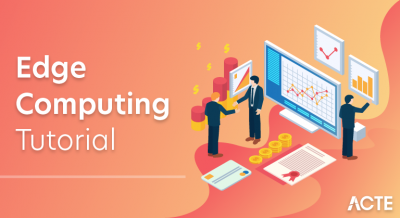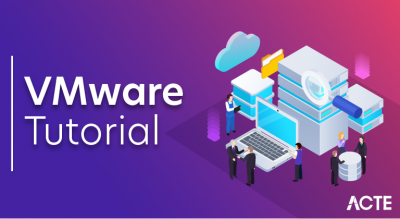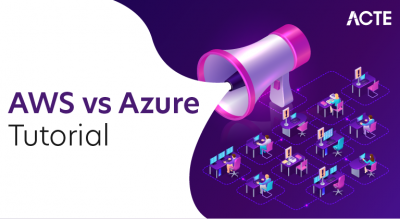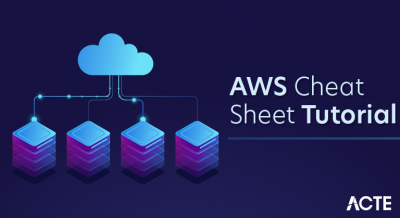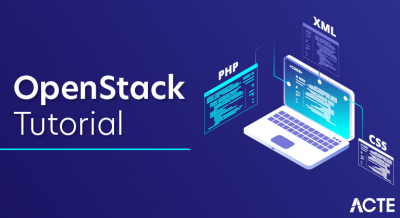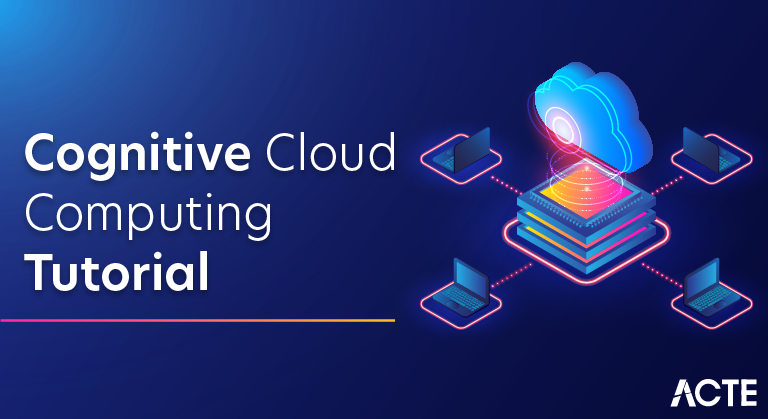
Cognitive Cloud Computing
- Cognitive computing represents the third era of computing. In the first era (19th century), Charles Babbage, also known as the father of the computer, introduced the concept of a programmable computer. Used in the navigational calculation, his computer was designed to tabulate polynomial functions. The second era (1950) experienced digital programming computers such as ENIAC and ushered an era of modern computing and programmable systems. Now, that’s turned into cognitive computing, which works on Deep Learning algorithms and Big Data analytics to provide insights.
- Thus, the brain of a cognitive system is the neural network, a fundamental concept behind Deep Learning. The neural network is a system of hardware and software mimicked after the central nervous system of humans to estimate functions that depend on the huge amount of unknown inputs.
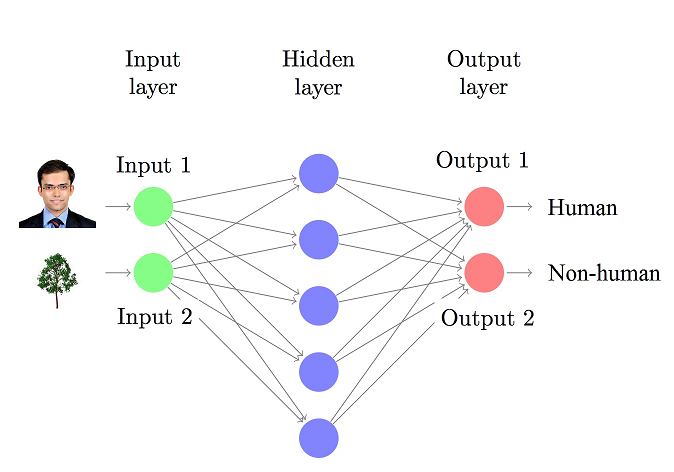
What is Cognitive Computing?
Cognitive Computing refers to individual technologies that perform specific tasks to facilitate human intelligence. Basically, these are smart decision support systems that we have been working with since the beginning of the internet boom. With recent breakthroughs in technology, these support systems simply use better data, better algorithms in order to get a better analysis of a huge amount of information.
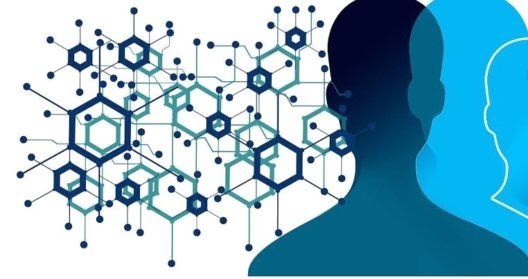
Also, you can refer to Cognitive Computing as:
- Understanding and simulating reasoning
- Understanding and simulating human behavior
Using cognitive computing systems helps in making better human decisions at work. Some of the applications of cognitive computing include speech recognition, sentiment analysis, face detection, risk assessment, and fraud detection.
How Cognitive Computing Works?
Cognitive computing systems synthesize data from various information sources while weighing context and conflicting evidence to suggest suitable answers. To achieve this, cognitive systems include self-learning technologies using data mining, pattern recognition, and natural language processing (NLP) to understand the way the human brain works.
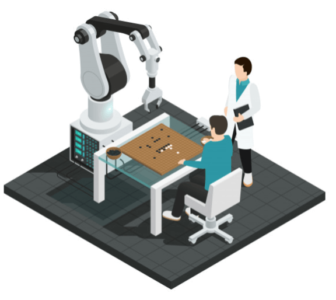
Using computer systems to solve problems that are supposed to be done by humans require huge structured and unstructured data. With time, cognitive systems learn to refine the way they identify patterns and the way they process data to become capable of anticipating new problems and model possible solutions.
To achieve these capabilities, cognitive computing systems must have some key attributes.
Key Attributes
- Adaptive: Cognitive systems must be flexible enough to understand the changes in the information. Also, the systems must be able to digest dynamic data in real-time and make adjustments as the data and environment change.
- Interactive: Human-computer interaction (HCI) is a critical component in cognitive systems. Users must be able to interact with cognitive machines and define their needs as those needs change. The technologies must also be able to interact with other processors, devices and cloud platforms.
- Iterative and stateful: Also, these systems must be able to identify problems by asking questions or pulling in additional data if the problem is incomplete. The systems do this by maintaining information about similar situations that have previously occurred.
- Contextual: Cognitive systems must understand, identify and mine contextual data, such as syntax, time, location, domain, requirements, a specific user’s profile, tasks or goals. They may draw on multiple sources of information, including structured and unstructured data and visual, auditory or sensor data.
The Features of a Cognitive Computing Solution
- Cognitive computing is the miniature of human notion and thought process in a computerised environment. It is a cumulativeness of self-learning systems which incorporates pattern recognition, data mining and natural language processing(NLP) to impersonate the way the human brain works. The main objective of cognitive computing is to create self-operating computerized systems that are proficient in solving even complex problems without any human help or intrusion.
- The cognitive process can be comprehended in a much simple way as “the mechanism which uses the existing knowledge for generating new knowledge”. The main theme of cognition is closely related to abstract concepts such as mind, perception, and intelligence. It is like understanding the obligation of a human brain and working on human kinds of issues. Such systems and set-up continually gain knowledge from the data. Cognitive computing system consolidates data from diverse and miscellaneous information sources while considering context and conflicting evidence to suggest the best feasible answers.
- It is one of the classifications of technologies that uses machine learning and Natural Languages Processing(NLP) to enable people and machines to interact and gain understanding more naturally for magnification of human expertise, perception, and cognition.
- With the present state of cognitive computing, basic solutions can play an excellent role of an assistant or virtual advisor. Siri, Google assistant, Cortana, and Alexa are good examples of personal assistants. In order to implement cognitive computing in commercial and widespread applications, Cognitive Computing Consortium has recommended the following features for computing systems.
1. Adaptive
They must learn as information changes and as goals and requirements evolve. They must resolve ambiguity and tolerate unpredictability. They must be engineered to feed on dynamic data in real-time or near real-time.
2. Interactive
Similar to brain the cognitive solution must interact with all elements in the system – processor, devices, cloud services and user. Cognitive systems should interact bidirectionally. It should understand human input and provide relevant results using Natural Language Processing and deep learning. Some intelligent chatbots such as Mitsuku have already achieved this feature.
3. Iterative and Stateful
They must aid in defining a problem by asking questions or finding additional source input if a problem statement is ambiguous or incomplete. They must “remember” previous interactions in a process and return information that is suitable for the specific application at that point in time.
4. Contextual
They must understand, identify, and extract contextual elements such as meaning, syntax, time, location, appropriate domain, regulations, user’s profile, process, task, and goal. They may draw on multiple sources of information, including both structured and unstructured digital information, as well as sensory inputs (visual, gestural, auditory, or sensor-provided).
Cognitive computing is definitely the next step in computing started by automation. It sets a benchmark for computing systems to reach the level of the human brain. But it has some limitations as AI is difficult to apply in situations with a high level of uncertainty, rapid change or creative demands. The complexity of problem grows with the number of data sources. It is challenging to aggregate, integrate, and analyze such unstructured data. A complex cognitive solution should have many technologies that coexist to give deep domain insights.
SCOPE OF COGNITIVE COMPUTING
- While computers have been faster at calculations and processing than humans for decades. But they have failed miserably to accomplish tasks that humans take for granted, like understanding the natural language or recognizing unique objects in an image. Thus cognitive technology makes such new class of problems computable. They can respond to complex situations characterized by ambiguity and have far-reaching impacts on our private lives, healthcare, business, etc.
- According to a study by the IBM Institute for Business Value – “Your Cognitive Future“, the scope of cognitive computing consists of engagement, decision, and discovery. These 3 capabilities are related to ways people think and demonstrate their cognitive abilities in everyday life.
1. Engagement
The cognitive systems have vast repositories of structured and unstructured data. These have the ability to develop deep domain insights and provide expert assistance. The models build by these systems include the contextual relationships between various entities in a system’s world that enable it to form hypotheses and arguments. These can reconcile ambiguous and even self-contradictory data. Thus these systems are able to engage in deep dialogue with humans. The chatbot technology is a good example of engagement model. Many of the AI chatbots are pre-trained with domain knowledge for quick adoption in different business-specific applications.
2. Decision
A step ahead of engagement systems, these have decision-making capabilities. These systems are modeled using reinforcement learning. Decisions made by cognitive systems continually evolve based on new information, outcomes, and actions. Autonomous decision making depends on the ability to trace why the particular decision was made and change the confidence score of a systems response. A popular use case of this model is the use of IBM Watson in healthcare. The system can collate and analyze data of patient including his history and diagnosis. The solution bases recommendations on its ability to interpret the meaning and analyze queries in the context of complex medical data and natural language, including doctors’ notes, patient records, medical annotations and clinical feedback. As the solution learns, it becomes increasingly more accurate. Providing decision support capabilities and reducing paperwork allows clinicians to spend more time with patients.
3. Discovery
Discovery is the most advanced scope of cognitive computing. Discovery involves finding insights and understanding vast amount of information and developing skills. These models are built on deep learning and unsupervised machine learning. With ever-increasing volumes of data, there is a clear need for systems that help exploit information more effectively than humans could on their own. While still in the early stages, some discovery capabilities have already emerged, and the value propositions for future applications are compelling. Cognitive Information Management (CIM) shell at Louisiana State University (LSU) is one of the cognitive solutions. The distributed intelligent agents in the model collect streaming data, like text and video, to create an interactive sensing, inspection, and visualization system that provides real-time monitoring and analysis. The CIM Shell not only sends an alert but reconfigures on the fly in order to isolate a critical event and fix the failure.
COGNITIVE COMPUTING LANDSCAPE
Present cognitive computing landscape is dominated by larger players – IBM, Microsoft, and Google. IBM being the pioneer of this technology has invested $26 billion dollars in big data and analytics and now spends close to one-third of its R&D budget in developing cognitive computing technology. Many other companies and organizations are developing products and services that are as good, if not better than Watson. IBM and Google have acquired some of the rivals and the market is moving towards consolidation. Let’s take a look at the prominent players in this market –
1. IBM Watson
Originally Watson is an IBM supercomputer that combines artificial intelligence (AI) and sophisticated analytical software for optimal performance as a “question answering” machine famously featured in show ‘Jeopardy’. Now it uses a set of transformational technologies such as natural language processing, image recognition, text analytics and virtual agents. IBM Watson leverages deep content analysis and evidence-based reasoning. Combined with massive probabilistic processing techniques, Watson can improve decision making, reduce cost and optimize outcomes.
2. Microsoft Cognitive Services
Microsoft cognitive services previously known as Project Oxford are a set of APIs, SDKs and cognitive services which the developers can use to make their applications more intelligent. With Cognitive Services, developers can easily add intelligent features – such as emotion and sentiment detection, vision and speech recognition, knowledge, search and language understanding – into their applications. Infact, the first version of our chatbot – ‘Specter’ (lower right corner) was built using the Microsoft Bot Framework to improve the efficiency of our marketing team. We then subsequently built it using our own chatbot development platform ‘WotNot‘.
3. Google DeepMind
DeepMind was acquired by Google in 2014 and considered to be a leading player in AI research. The team consists of many renowned experts in the field of deep neural networks, reinforcement learning, and systems neuroscience-inspired models. DeepMind became popular with AlphaGo, a narrow AI to play Go, a Chinese strategy board game for two players. AlphaGo became the first AI program to beat a professional human player in October 2015, on a full-sized board.
4. CognitiveScale
CognitiveScale founded by former members of IBM Watson team provides cognitive cloud software for enterprises. Cognitive Scale’s augmented intelligence platform delivers insights-as-a-service and accelerates the creation of cognitive applications in healthcare, retail, travel, and financial services. They help businesses make sense from ‘dark data’ – messy, disparate, first and third party data and drive actionable insights and continuous learning.
5. SparkCognition
SparkCognition is an Austin-based startup formed in 2014. SparkCognition develops AI-Powered cyber-physical software for the safety, security, and reliability of IT, OT, and the IIoT. The technology is more inclined towards manufacturing. It is capable of harnessing real-time sensor data and learning from it continuously, allowing for more accurate risk mitigation and prevention policies to intervene and avert disasters.
Watson and DeepMind’s success has inspired other companies to develop cognitive platforms using open source tools. Other leading technology companies like Qualcomm and Intel are taking cautious steps to include cognitive solutions for specialized industries. Uber has established a research arm dedicated to AI and machine learning and acquired Geometric Intelligence and Otto. Otto is an autonomous truck and transportation startup and Geometric Intelligence is focused on generating insights from fewer data using machine learning. Gamalon has developed an AI technique using Bayesian Program Synthesis. It requires only a few pieces to train the system to achieve same levels of accuracy as neural networks.
Healthcare is the most popular sector to adopt cognitive solutions. Startups such as Lumiata and Enlitic have developed small and powerful analytic solutions that assist healthcare providers in diagnosis and prediction of disease conditions.Other companies in this market are Cisco cognitive threat analytics, CustomerMatrix, Digital Reasoning and Narrative Science.
LIMITATIONS OF COGNITIVE COMPUTING
Limited analysis of risk
The cognitive systems fail at analyzing the risk which is missing in the unstructured data. This includes socio-economic factors, culture, political environments, and people. For example, a predictive model discovers a location for oil exploration. But if the country is undergoing a change in government, the cognitive model should take this factor into consideration. Thus human intervention is necessary for complete risk analysis and final decision making.
Meticulous training process
Initially, the cognitive systems need training data to completely understand the process and improve. The laborious process of training cognitive systems is most likely the reason for its slow adoption. WellPoint’s financial management is facing a similar situation with IBM Watson. The process of training Watson for use by the insurer includes reviewing the text on every medical policy with IBM engineers. The nursing staff keeps feeding cases until the system completely understands a particular medical condition. Moreover, the complex and expensive process of using cognitive systems makes it even worse.
More intelligence augmentation rather than artificial intelligence
- The scope of present cognitive technology is limited to engagement and decision. Cognitive computing systems are most effective as assistants which are more like intelligence augmentation instead of artificial intelligence. It supplements human thinking and analysis but depends on humans to take the critical decisions. Smart assistants and chatbots are good examples. Rather than enterprise-wide adoption, such specialized projects are an effective way for businesses to start using cognitive systems.
- Cognitive computing is definitely the next step in computing started by automation. It sets a benchmark for computing systems to reach the level of the human brain. But it has some limitations which make AI difficult to apply in situations with a high level of uncertainty, rapid change or creative demands. The complexity of problem grows with the number of data sources. It is challenging to aggregate, integrate and analyze such unstructured data. A complex cognitive solution should have many technologies that coexist to give deep domain insights.
- Thus, besides AI, ML and NLP, technologies such as NoSQL, Hadoop, Elasticsearch, Kafka, Spark etc should form a part of the cognitive system. This complete solution would be capable of handling dynamic real-time data and static historical data. The enterprises looking to adopt cognitive solutions should start with a specific business segment. These segments should have strong business rules to guide the algorithms, and large volumes of data to train the machines.
How cognitive computing differs from AI
- Cognitive computing is often used interchangeably with AI — the umbrella term for technologies that rely on data to make decisions. But there are nuances between the two terms, which can be found within their purposes and applications.
- AI technologies include — but aren’t limited to — machine learning, neural networks, NLP and deep learning. With AI systems, data is fed into the algorithm over a long period of time so that the systems learn variables and can predict outcomes. Applications based on AI include intelligent assistants, such as Amazon’s Alexa or Apple’s Siri, and driverless cars are based on AI.
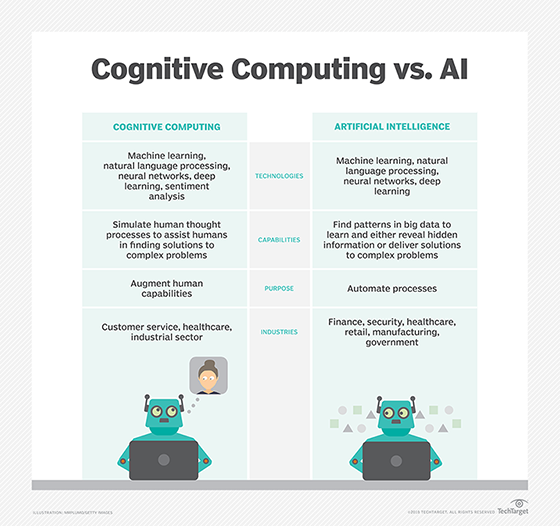
The biggest difference between cognitive computing and AI is its purpose.
- The term cognitive computing is typically used to describe AI systems that aim to simulate human thought. Human cognition involves real-time analysis of environment, context and intent, among many other variables that inform a person’s ability to solve problems. A number of AI technologies are required for a computer system to build cognitive models that mimic human thought processes, including machine learning, deep learning, neural networks, NLP and sentiment analysis.
- In general, cognitive computing is used to assist humans in their decision-making process. Some examples of cognitive computing applications include supporting medical doctors in their treatment of disease. IBM Watson for Oncology, for example, has been used at Memorial Sloan Kettering Cancer Center to provide oncologists with evidence-based treatment options for cancer patients. When medical staff input questions, Watson generates a list of hypotheses and offers treatment options for doctors to consider.
- Where AI relies on algorithms to solve a problem or to identify patterns hidden in data, cognitive computing systems have the loftier goal of creating algorithms that mimic the human brain’s reasoning process to solve an array of problems as the data and the problems change.
Cognitive Computing vs AI
The technologies behind Cognitive Computing are similar to the technologies behind AI. These include machine learning, deep learning, NLP, neural networks, etc. But they have various differences as well.
| Cognitive Computing | Artificial Intelligence |
|---|---|
| Cognitive Computing focuses on mimicking human behavior and reasoning to solve complex problems. | AI augments human thinking to solve complex problems. It focuses on providing accurate results. |
| It simulates human thought processes to find solutions to complex problems. | AI finds patterns to learn or reveal hidden information and find solutions. |
| They simply supplement information for humans to make decisions. | AI is responsible for making decisions on their own minimizing the role of humans. |
| It is mostly used in sectors like customer service, health care, industries, etc. | It is mostly used in finance, security, healthcare, retail, manufacturing, etc. |
Applications of Cognitive AI
- Smart IoT: This includes connecting and optimizing devices, data and the IoT. But assuming we get more sensors and devices, the real key is what’s going to connect them.
- AI-Enabled Cybersecurity: We can fight the cyber-attacks with the use of data security encryption and enhanced situational awareness powered by AI. This will provide a document, data, and network locking using smart distributed data secured by an AI key.
- Content AI: A solution powered by cognitive intelligence continuously learns and reasons and can simultaneously integrate location, time of day, user habits, semantic intensity, intent, sentiment, social media, contextual awareness, and other personal attributes
- Cognitive Analytics in Healthcare: The technology implements human-like reasoning software functions that perform deductive, inductive and abductive analysis for life sciences applications.
- Intent-Based NLP: Cognitive intelligence can help a business become more analytical in their approach to management and decision making. This will work as the next step from machine learning and the future applications of AI will incline towards using this for performing logical reasoning and analysis.

